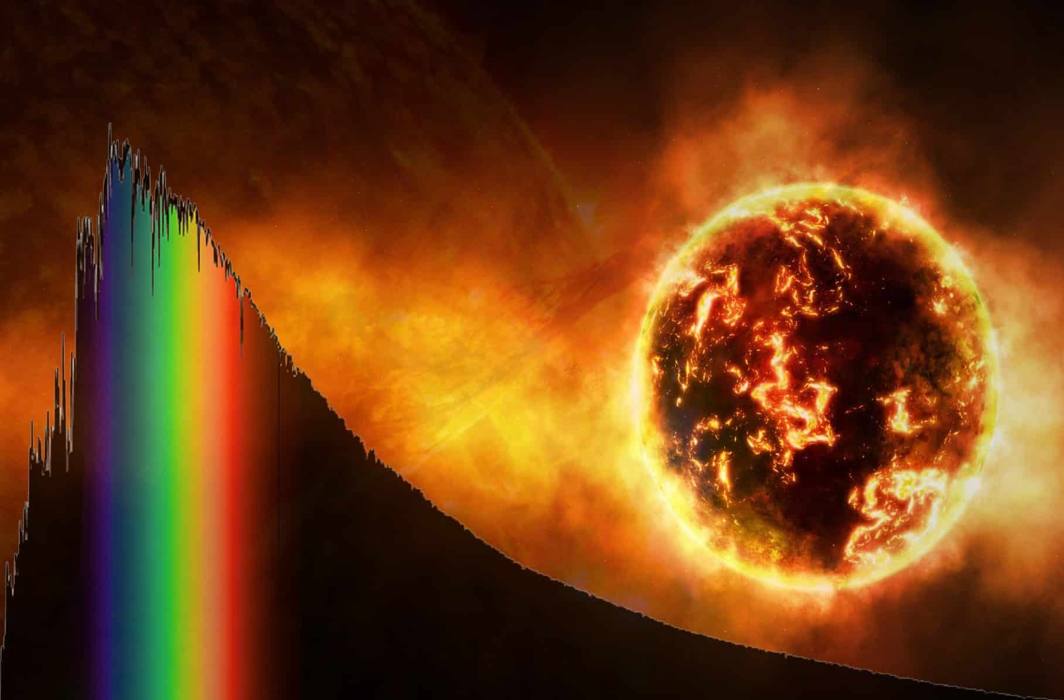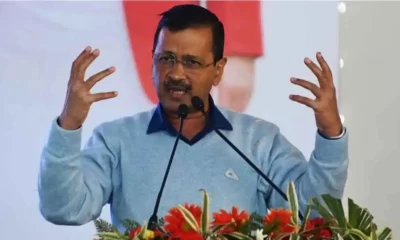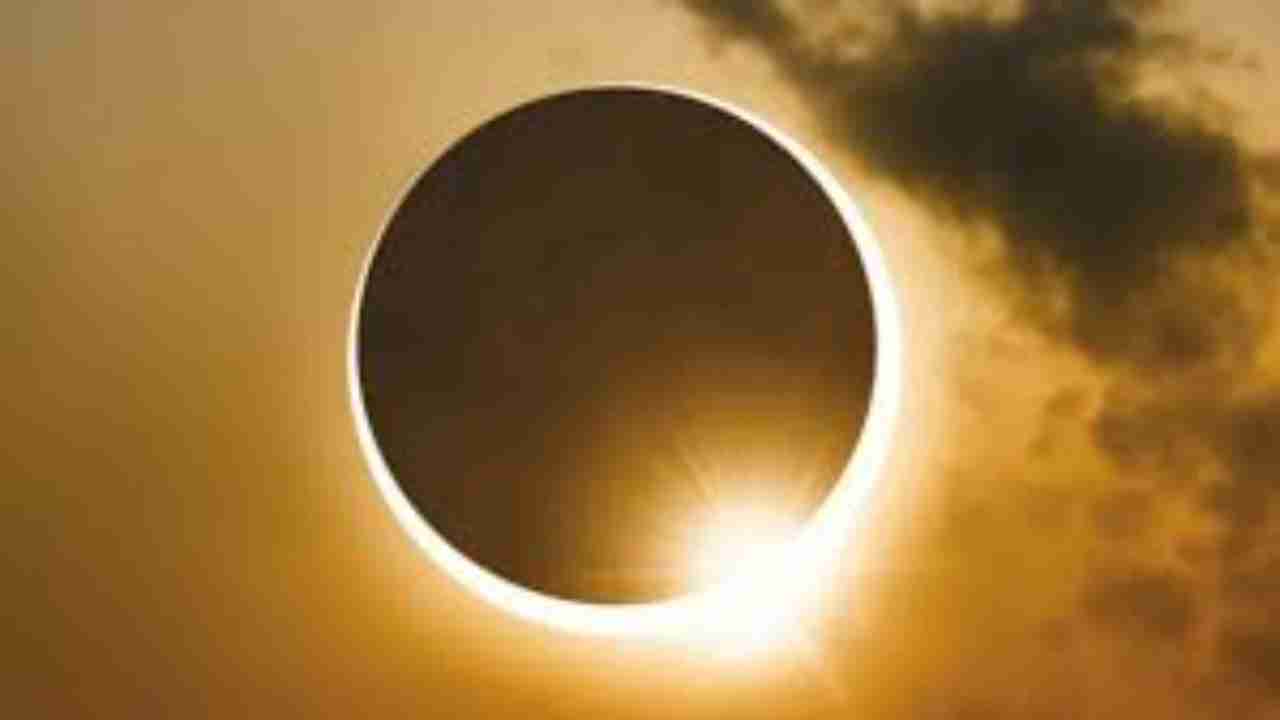Gadgets
How Machilipatnam became site of a pioneering discovery in 19th century

By Dr Biman Nath
Machilipatnam is one of the oldest port towns on the Andhra coast. Very few Indians would know that it was also the site of a landmark discovery 150 years ago that laid the foundation of a new branch in science – astrophysics.
It was in Machilipatnam that the world caught the first glimpse of light from a new material – helium. Though helium balloons may be commonplace today, helium was not known back then. The first sign that it existed came not from a chemistry laboratory but from looking at the Sun’s corona or outer layer during a total solar eclipse.
The total solar eclipse that occurred on August 18, 1868 caused much excitement among astronomers. It offered them a chance to look at the outer part of the sun. It made it possible for them to detect the presence of helium in the Sun. That is why the newly discovered element was named after the Greek word ‘helios’ for sun.
The eclipse was visible from the southern part of India for 6 minutes 47 seconds. During a total solar eclipse, the moon comes between the Earth and the Sun and blocks our view of the Sun (rather, the brightest part of the Sun). The most spectacular part of the event is the sighting of the corona which is otherwise not visible to us. The corona dazzles in the sky when the main disc is blocked.
Astronomers were hoping to study the corona during the 1868 solar eclipse. There were reasons to do so. We know that a prism ‘breaks down’ sun rays into different colours. If one looked closely, one would find numerous dark lines superposed on the background rainbow colours. It wasn’t clear where these dark lines came from. Darkness in a spectrum means a missing portion of light. Some light from the Sun was being robbed, and one didn’t know the culprit.
The path of totality of the eclipse cut across present-day Maharashtra and Andhra Pradesh. A team of astronomers from the Royal Astronomical Society set camps in Guntur under the leadership of Major James Francis Tennant. A French astronomer, Pierre Jules Janssen, too came to Guntur. He had designed a ‘spectroscope’ with which one could distinguish lines of adjacent colours in a spectrum. Then there was the Government Astronomer of Madras Observatory, Norman Robert Pogson, who had cobbled together a team of engineers from the Railways and the newly founded Telegraph Department for the expedition. He had camped in the nearby port town of Masulipatnam (present day Machilipatnam).
They were trying to validate a theory proposed in 1859 by German scientists – Gustav Kirchhoff and Robert Bunsen – that all materials radiate in characteristic colours when hot—like sodium burns with a yellow flame and copper with a bluish-green flame. When you look at the hot glowing gas through a prism you won’t see all the rainbow colours but a few discrete bright ‘lines’, shining at the characteristic colours of the material. Now let the gas cool and put it in the path of some background white light (which shines in all the colours). The cold gas would then absorb light of precisely those colours that it would have itself radiated when hot. And you would see dark lines in the spectrum of the background white source.

Handpainted spectrum (left) observed by Pogson (right), Photo credit : Indian Institute of Astrophysics Archives
Kirchhoff-Bunsen’s theory implied that dark lines in the solar spectrum arose from cooler atoms in the solar atmosphere, which absorbed the white light coming from the core of the sun. It also meant that we could identify the material in the solar atmosphere, from the ‘colour’ of light it absorbed, because we could make the material hot in laboratory and check if it radiated in the same colour. In other words, having known that sodium radiates in yellow when hot, if one spots a dark line in the yellow part of the solar spectrum, one might guess that it was sodium atom at work.
It gave astronomers a handle to probe chemical and physical properties of the sun and other stars. Not satisfied with the studies of mere position and motion of stars, they became interested in the new field of spectroscopy. There was a promise of a whole new exciting field of science—that would be called ‘astrophysics’ one day. Who had ever thought that one could find out what was inside the Sun or the distant stars?
But it was still an unproven model. Luckily, like all good theories, it came with a testable prediction. The outer layer of the sun is relatively cooler than the core, but it is quite hot (now we know the temperature to be roughly 6000 Celsius). So if one could look at the outer layers through a prism—and only the outer layer—then one should be able to see it radiate and not just absorb. One should see bright lines in place of the dark lines, precisely in the same places (or colours) of the dark lines.
This was what the astronomers were hoping to confirm during the total solar eclipse on 18 August 1868. And they were handed with a bonanza. They indeed saw the dark lines ‘reverse’ to bright lines. Not only that, they also saw brand new bright line they could not identify with any existing terrestrial element.
August is not a particularly favourable month for viewing solar eclipses from India because of monsoons. The eclipse was supposed to begin slightly before 9am. Light clouds in the eastern sky made the astronomers wait with bated breath. Luckily the sky cleared, letting Janssen and Tennant witness the confirmation of Kirchhoff’s idea—the dark lines indeed turned bright. There was a bright yellow line that they thought was the signature of sodium. But Pogson in Masulipatnam had some doubts if it really coincided with the signature wavelength of sodium.
Back in England, Norman Lockyer had a different idea. He did not want to chase eclipses around the world. He thought he could isolate the light of the outer layer of the Sun somehow by blocking out everything in the view of the telescope except a carefully positioned small slit. Lockyer confirmed Pogson’s doubt that the errant yellow line might not be due to sodium, and coined the name ‘helium’. Much later, in 1895, William Ramsay isolated an element from a radioactive material, which had the same spectral signature, and so could be identified as helium.
It is the only element that was discovered by astronomers and not by chemists. We now know that helium makes up a quarter of the universe. But it is a very light element—the second lightest element of all. Its lightness made it escape the gravity of the Earth since its formation and now all the helium that we can get from mines comes from the decay of radioactive material deep inside the Earth. Its absence from the Earth ensured that chemists won’t be able to find it here, but astronomers could. And that revolutionized astronomy. (India Science Wire)
The writer is a scientist at the Raman Research Institute, Bangalore.
Gadgets
WhatsApp to introduce Native File Sharing feature similar to Apple’s AirDrop
Users can choose to be visible to others without disclosing their phone numbers to people who are not their contacts.

A Meta-owned messaging platform, WhatsApp is all set to introduce a new feature that allows Android users to share files with another user nearby. According to reports, the feature will be developed similar to Apple’s AirDrop.
The file sharing feature nearby is not currently available for beta testers. However, according to a report from WhatsApp feature tracker WABetaInfo, it seems that the feature will soon be introduced. The report reveals a screenshot that shows an option within the app stating, to share files with people nearby, along with a list of nearby users.
It is interesting to note that users can choose to be visible to others without disclosing their phone numbers to people who are not their contacts. In order to share files with other users, one needs to wait for nearby users to accept their request. The process involves a unique interaction, where nearby users can shake their device to receive incoming share requests. It is important to note that this feature is designed with end-to-end encryption to ensure user privacy.
In the upcoming update, WhatsApp is expected to introduce a nearby file-sharing feature. However, the current beta version for Android, which is 2.24.2.20, has addressed a camera issue. Some Android beta testers have reported difficulties in launching the camera within the app after the 2.24.2.13 update. Upon launching, users were presented with an error message that said, can’t start camera, please restart your device. This issue persisted even after restarting the device or relaunching the app.
The latest beta update of WhatsApp, located at 2.24.2.20, has fixed the camera bug. This allows users to launch the camera within the app and share photos and videos with their contacts without any interruptions. As WhatsApp continues its efforts to improve its features and address bugs, users can expect a better messaging experience on the platform.
Gadgets
Meesho mega blockbuster sale: E-commerce platform to offer 80 percent discount on electronics
The e-commerce platform’s first mega blockbuster sale will sell more than 400 brands directly with the help of authorised partners on its digital store called Meesho Mall.

Ahead of the festive season, e-commerce platform Meesho’s mega blockbuster sale is starting on Friday, October 6, 2023. The platform will provide a massive discount of up to 80 percent on different categories such as essentials, accessories, electronics, footwear, etc.
The blockbuster sale is scheduled to conclude on October 13, 2023. Notably, the Softbank backed e-commerce platform is starting its festive sale a day before Flipkart or Amazon’s festive sale goes live. The e-commerce platform’s first mega blockbuster sale will sell more than 400 brands directly with the help of authorised partners on its digital store called Meesho Mall.
Reportedly, the platform also added over 50 lakh new customers during these sales. More than 75 percent of the demand was received from Tier-II cities, including Amravati, Aurangabad, Dehradun, Nellore, Solapur, and Warangal. The platform further claimed that they have added more than 2 lakh sellers in the past two years.
Recently, Meesho affirmed that they have received over 10 million (approx) from its pre-festive sales during Onam, Raksha Bandhan, and Ganesh Chaturthi. The platform has more than 14 lakh sellers, selling approx 12 crore products in 30 different categories.
In an effort to increase the seller base, the company announced the onboarding of non-GST sellers on the platform earlier this week. The GST council announced to permit the e-commerce platform to onboard sellers with turnover of up to Rs 40 lakh.
Prior to Meesho’s Mega Blockbuster Sale, the company introduced a loyalty programme during which eligible users will earn Smart Coins, which the user can redeem every time they make the purchase of any products on the platform.
As per Redseer, over 140 million shoppers are likely to make purchases during the festive season. This will enhance the Gross Merchandise Value (GMV) of the Indian e-commerce sector by 18 to 20 per cent and may touch Rs 90,000 crore as compared to Rs 76,000 crore last year.
Phones & gadgets
Apple launches iPhone 15 series, India price, features, availability
The iPhone 15 series will be available in India from September 22 but iPhone lovers can also pre-order, starting from September 15 onwards.

Apple launched its most anticipated iPhone 15 series, including the iPhone 15, iPhone 15 Plus, iPhone 15 Pro and iPhone 15 Pro Max during the Wonderlust event globally on September 12 night.
The iPhone 15 series will be available in India from September 22 but iPhone lovers can also pre-order, starting from September 15 onwards.
People can buy a new iPhone 15 or upgrade it to the old one. There are five colours available for the people.
According to reports, Apple has been manufacturing the iPhone 15 series in India and China. Apple has moved 7% of its iPhone production to India. Previously, India was not making the newest models. The Centre’s production-linked incentive (PLI) scheme for smartphones played a part in Apple moving its production to India.
The new iPhone 15 has been launched with the same starting price as its prototype, the iPhone 14. The 128GB variant is priced at Rs 79,900, while the 256GB variant costs Rs 89,900. For people who need more storage, the 512GB variant is available for Rs 1,09,900.
This latest iPhone series puffs a 6.1-inch display and comes in five different colours which are pink, yellow, green, blue, and black. While the design remains the same as the previous models, the iPhone 15 features a dynamic island notch instead of the usual notch, which was highly popular among the iPhone 14 Pro phones.
The camera part of the iPhone series has undergone significant upgrades, the new iPhone 15, with an enhanced 48-megapixel primary sensor replaces the 12-megapixel dual camera system which was available in the previous iPhone 14. This significant improvement promises better low-light photography and portrait shots.
The tech giant announced that the iPhone 15 has an all-day battery life, making it more convenient for users to go about their daily activities without worrying about their phone’s battery.
The iPhone 15 Pro models feature a lighter body and thinner bezels. The new AirPods Pro with USB-C charging case will support Lossless Audio with Apple Vision Pro.
Additionally, the iPhone 15 is powered by Apple’s A16 bionic processor, an upgrade from the A15 bionic chipset used in the previous iPhone 14 and iPhone 14 Plus models. The Pro models had the faster and better A16 chip, but now this feature is available in all iPhone 15 models.
The USB-C port on the standard iPhone 15 and iPhone 15 Plus remain limited to lightning speeds up to 480 Mbps. The iPhone 15 Pro and iPhone 15 Pro Max support USB 3 speeds up to 10 Gbps. People will need to buy a separate 1-meter Thunderbolt 4 Pro cable for Rs 5,724 or Rs 10,701 for the 1.8-meter cable to support faster speeds.
The dynamic island notch feature, which can adjust its size according to notifications, was widely discussed before the launch of the iPhone 15. This unique feature can now be available in all models of the phone.
Another important feature of the iPhone 15 is the shift to the USB Type C charging port. Apple has abandoned the lightning port in favour of the more commonly used USB Type C charging port. This means, there is no longer a need for a special iPhone charging cable to be carried around everywhere you go.
-

 Entertainment21 hours ago
Entertainment21 hours agoBollywood stars Vidya Balan, Kartik Aaryan, Pratik Gandhi, Ileana D’Cruz, Mouni Roy, Radhika Madan, Mrunal Thakur attend Do Aur Do Pyaar premiere
-

 Cricket news20 hours ago
Cricket news20 hours agoHappy Birthday KL Rahul: Suniel Shetty wishes son-in-law KL Rahul on his 32nd birthday
-

 India News23 hours ago
India News23 hours agoReligious outfit vandalises The Blessed Mother Teresa High School in Telangana after teachers object to students wearing Hanuman Deeksha dress
-

 2024 Lok Sabha Elections3 hours ago
2024 Lok Sabha Elections3 hours agoPrime Minister Narendra Modi urges citizens to vote in record numbers as voting for first phase of Lok Sabha elections begins on 102 seats across India
-

 India News19 hours ago
India News19 hours agoEnforcement Directorate seizes Shilpa Shetty’s husband Raj Kundra’s properties worth Rs 97 crore
-

 India News17 hours ago
India News17 hours agoEnforcement Directorate says Arvind Kejriwal is deliberately eating mangoes, sweets, taking sugar with tea to increase his blood sugar level and create ground for bail
-

 2024 Lok Sabha Elections1 hour ago
2024 Lok Sabha Elections1 hour agoKamal Haasan, Rajinikanth, Vijay Sethupathi, Dhanush vote in Chennai
-

 2024 Lok Sabha Elections2 hours ago
2024 Lok Sabha Elections2 hours agoLok Sabha elections 2024: Google Doodle marks the start of polls with index finger voting symbol










